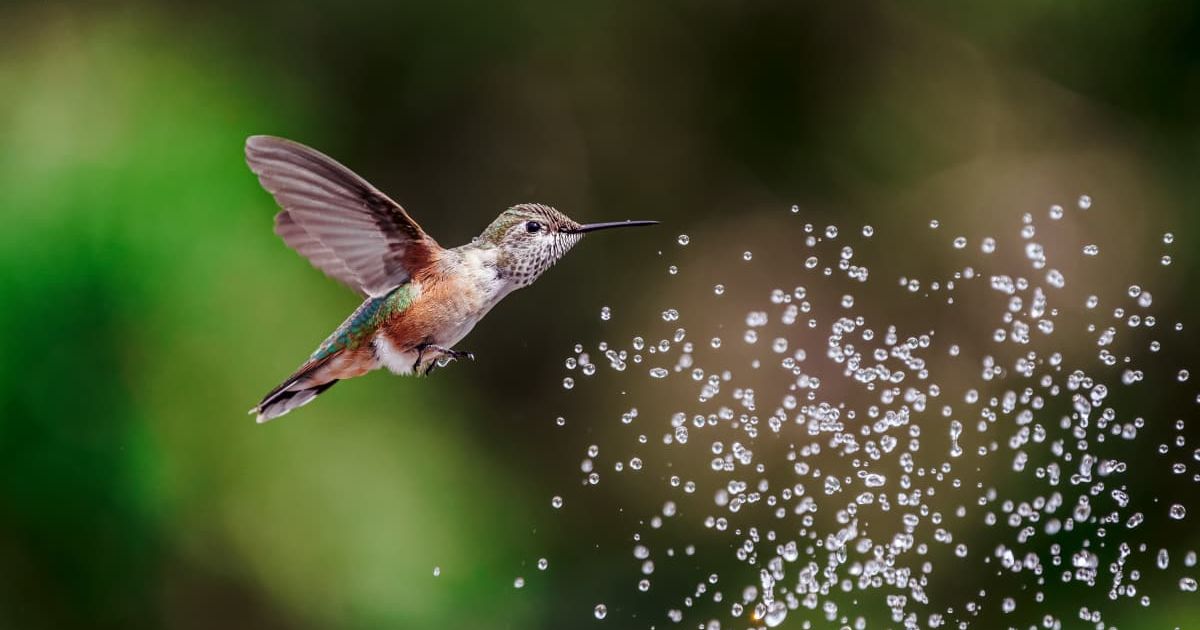Most Hummingbirds Don’t Drink From a Bird Bath — Expert Reveals a Simple Way to Hydrate Them

It is no surprise that hummingbirds need water to survive. While nectar provides the majority of their hydration, the birds may require freshwater sources to supplement their nutrition during hot and arid climates. Birdbaths provide water to a diversity of bird species, but hummingbirds do not greatly benefit from them due to their depth. Hummingbirds are the smallest birds in the world, ranging in size from 2 to 8 inches in length, while their lightweight bodies may weigh only 2 grams, according to Rio Salado Audubon. Therefore, the average birdbath barely considers these little creatures. Experts have revealed simple ways that can help hummingbirds remain hydrated during heat waves and dry weather conditions, per Southern Living.

Experts’ take on hummingbird hydration

Hummingbirds require water for bathing and hydration, like any other living creature. However, the sources they acquire these may be slightly different from most birds. In hot and dry climates, the tiny birds would often look for water as the nectar in bird feeders simply does not suffice. “Hummers likely get their dietary or metabolic water from the nectar they drink,” said Curtis Smalling, VP and director of Audubon North Carolina. To help out, homeowners can install misters in their gardens to provide water for hummingbirds. Better if the misters are placed in a strategic location amongst vegetation where the mist accumulates on foliage.
When the mist condenses on the foliage, small puddles are created on the leaves, which the hummers will use to hydrate themselves. Alternatively, water features are also a good bet to attract hummingbirds to drink water from and bathe in. “Moving water is often most attractive,” noted Erik Johnson, PhD, director of conservation science at Audubon Delta. Installing a pump that moves water along a shallow surface or in a cascading motion would be useful. According to Perky Pet, weeping-style fountains, landscape sprinklers, and drippers splashing on a rock are also effective ways to provide a water source for the tiny birds. @HummingbirdSpot shared a detailed video on how to attract the hummers with water.
Hummingbirds avoid birdbaths

Birdbaths are not completely rejected by hummingbirds, but are generally not preferred as they pose the risk of drowning. “Hummingbirds use smaller sources of water for bathing, like wet leaves on trees and other smaller pools and puddles, so the need for a traditional bath is less than other longer-legged birds,” explained Smalling. This is primarily because hummingbirds belong to the Apodiformes order of birds, which means “no feet” or, realistically, refers to the incredibly short legs of the birds. The short legs of hummingbirds often deter them from bird baths. They require the water to be as shallow as less than ¼ inch in depth.

However, traditional birdbaths are often graced by their presence during migrating seasons, the expert suggested. Hummingbirds do not need a complete soak because they only need light showers to clean their feathers. This can be achieved during rain, near a sprinkler, or in the spray of splashing water. A report by Birds and Blooms suggested setting up a hummingbird birdbath or adding stones to a classic pedestal to make the basin shallower than it usually is. The work here is not done as the bird bath should be regularly maintained while keeping an eye out for the water levels, even refilling when necessary.
More on GreenMatters
Hummingbirds Are Growing Longer Beaks, and Your Bird Feeder Could Be The Surprising Reason For It
Expert Explains Why Leaving Hummingbird Feeders Up After Summer Could Be a Bad Idea
Expert Reveals 3 Surprising Reasons Why Birds Are Repelled by Your Bird Bath: ‘It’s Possibly...’